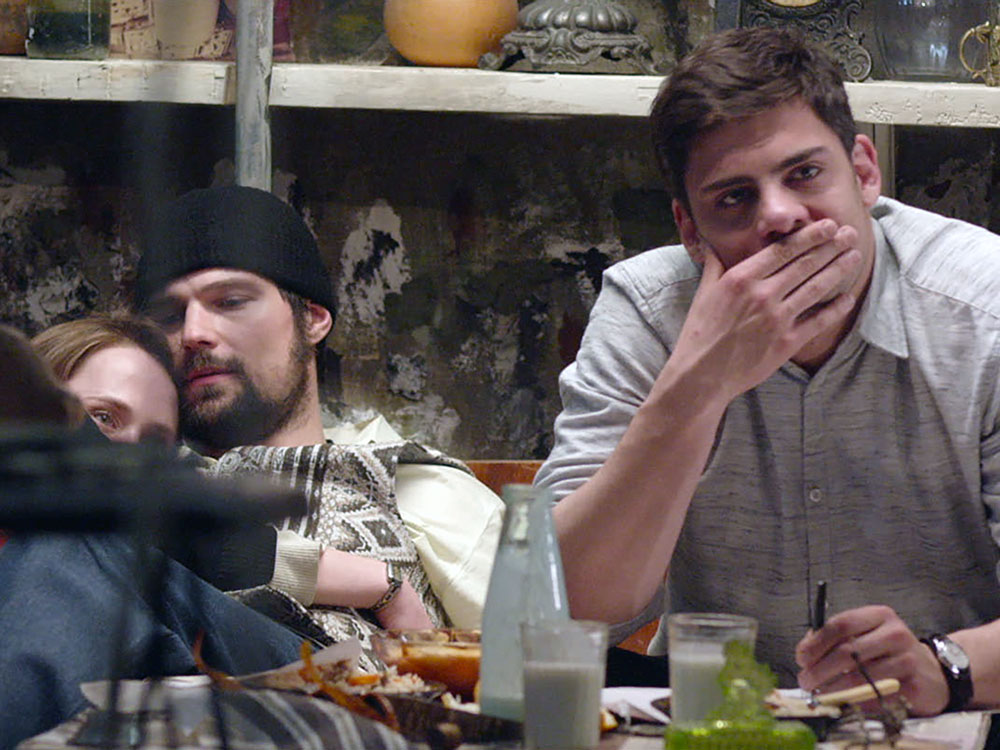The Black Tower, dir. John Smith, UK 1985-7, 23 min.
The second of three screenings at the ICA as part of John Smith: Introspective (1972 – 2022), a two-month survey of the British filmmaker’s work at the ICA and Close-Up Film Centre, focuses on 1986 to 1992, a period during which Smith produced some of his most radical and influential films – including Om, The Black Tower and Slow Glass. The programme also includes the more rarely seen films Gargantuan and Dungeness (featuring Derek Jarman’s then-recently acquired Prospect Cottage).
Part of the ICA 75th Anniversary Season
Smith will be in conversation Carol Morley following the screening of five of his most influential films.
John Smith: Introspective (1972 – 2022) takes place every Thursday evening from October 1 until December 1 at Close-Up Film Centre (97 Sclater Street, E1 6HR), with events at the ICA on October 1 (with composer Jocelyn Pook), October 27 (with Carol Morley) and December 1 (with musician Jarvis Cocker). For more information, visit johnsmith-introspective.com.
Part of the ICA 75th Anniversary Season
Programme:
Om (1986, 4 min., HD video from 16mm)
‘Om explores our response to aural, visual and ideological stereotypes, which Smith signals through a chiefly associational system that manipulates our expectations. We are taken on a journey from one stereotype to its opposite, as images transform and juxtapose to invert our interpretations of what we see and hear.’ – Gary Davis
The Black Tower (1985-7, 23 min., HD video from 16mm)
‘Smith’s “accidental horror” film wears its constructivist tricks as a primary-coloured cloak around the barest of wireframe figures. That Smith dismisses the plot as secondary to the film itself reveals more about his artistic leanings than any supposed embracing of genre, and the fractured realism and creeping terror of the story plays out despite and because of them.’ – Thogdin Ripley
Dungeness (1987, 3 min., SD video from 16mm [silent])
Originally made for a multi-media theatre production by Graeme Miller, Dungeness creates a series of abstract rhythms through selectively framing and alternating monochrome fields.
Gargantuan (1992, 1 min., HD video from 16mm)
‘A gigantic reptile fills the frame as Smith begins to sing. The manipulative power of script and framing in film and video is sharply yet playfully highlighted in a single shot.’ – Helen Legg
Slow Glass (1988-91, 40 min., HD video from 16mm)
‘Slow Glass begins with a shout in the street and a smashed pane, and ends with a bricked-up window. Between these literal images of opening and closing, the film spins immaculately shot puns and paradoxes that play on reflection and speculation. Glass is the key: the cutting of glass is matched to the editing of film, and the camera’s lens to the surface which it captures. Other themes emerge – among them the constancy of change, as the face of London alters and the past becomes present.’ – A L Rees
Ticket information
- All tickets that do not require ID (full price, disabled, income support) can be printed at home or stored in email
- For aged-based concession tickets (under 25, student) please bring relevant ID to collect at the front desk before the event.
All films are ad-free and 18+ unless otherwise stated, and start with a 10 min. curated selection of trailers.
Members+ and all Patrons gain free entry to all cinema screenings, exhibitions, talks, and more.
Join today as a Member+ for £25/month.












no. 236848.